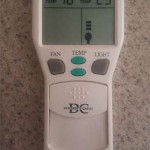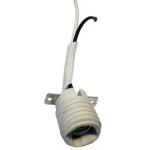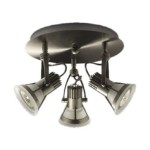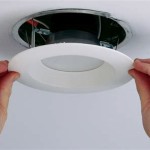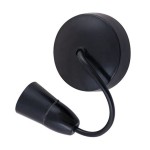Essential Aspects of Ceiling Motion Light Sensor
Ceiling Motion Light Sensor is a crucial component of modern lighting systems, offering convenience, energy efficiency, and enhanced safety. Understanding the essential aspects of these sensors is vital for effective installation and optimal performance. This article explores the key considerations when choosing and using ceiling motion light sensors, ensuring that they meet specific lighting needs and enhance the user experience.
Types of Ceiling Motion Light Sensors
Ceiling motion light sensors come in various types, each with distinct characteristics. Passive infrared (PIR) sensors detect changes in infrared radiation emitted by moving objects. Microwave sensors utilize high-frequency electromagnetic waves to detect motion. Ultrasonic sensors emit ultrasonic waves and measure the Doppler shift caused by moving objects. Different types of sensors have varying detection ranges, sensitivity levels, and field of views, so choosing the appropriate type is essential.
Detection Range and Sensitivity
The detection range determines the area that the sensor can monitor for motion. It is crucial to select a sensor with a range that covers the desired detection area. Sensitivity refers to the sensor's ability to detect objects of different sizes and speeds. Higher sensitivity allows the sensor to detect smaller or slower-moving objects, but it may also increase the risk of false triggers.
Field of View and Mounting Height
The field of view (FOV) of a ceiling motion light sensor determines the angle at which it can detect movement. A wider FOV covers a larger area, while a narrower FOV provides more focused detection. The mounting height of the sensor also affects its FOV and detection range. Higher mounting heights may provide a wider FOV, but they can also reduce sensitivity.
Time Delay and Auto-Off Features
Time delay settings allow the sensor to keep the lights on for a specified period after motion is detected. This prevents the lights from turning off prematurely when there is temporary movement. Auto-off features turn the lights off automatically if no motion is detected for a predetermined duration. These features contribute to energy savings and convenience.
Additional Features and Considerations
Modern ceiling motion light sensors may offer additional features such as daylight harvesting, which adjusts the light output based on ambient light levels. Some sensors have built-in light sources, while others require separate light fixtures. Proper installation and maintenance are also crucial to ensure optimal performance and longevity.
Conclusion
Ceiling motion light sensors offer a range of benefits, from enhanced safety and convenience to energy efficiency. By understanding the essential aspects of these sensors, including types, detection range, field of view, time delay, and additional features, users can make informed decisions when choosing and installing them. Careful consideration of these factors ensures that the sensors meet specific lighting needs and provide reliable and effective operation.

Commercial Electric 12 In Motion Sensing Closet Light Led Flush Mount Ceiling 1000 Lumens 4000k Bright White Garage Storage Room 54074491 The Home Depot

Functional Ceiling Light 8718699680534 Philips

Ceiling Mount 360 Degree Pir Occupancy Motion Sensor

Ceiling Lights With Motion Detector Eglo

Rechargeable Led Motion Sensor Ceiling Light Indoor With Remote Hokolite

Compre Luzes De Teto Led Com Sensor Movimento 15w 20 30 40 Inteligente Pir Lâmpadas Para Iluminação Interna Corredor Escada Joom

Maxxima 6 In 1 Light White Motion Sensor Integrated Led Flush Mount Mcl 710600w The Home Depot

Sensor Switch Indoor Motion In The Sensors Detectors Department At Com

Pir Occupancy Light Switch

14 Led Mood Lighting Ceiling Light With Remote Motion Sensor Koda
Related Posts

